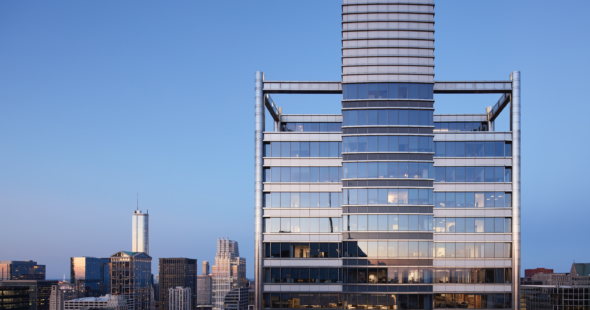Transparency in workplace communication is essential for productivity. The physical design of the space can oftentimes impact how we speak to one another and how collaborations are encouraged. In this recent Forbes article, the author states, “Spaces that allow for incubation of ideas, and those that give freedom to the employees to choose the way they want to work help create an emotional connection between the people and the place.” By doing this, there is a natural ebb and flow between employees — helping initiate (and sustain) more fluid conversation, which can lead to productive idea-generating.
For Irvine Company buildings, this takes place in amenity clusters that encourage organic connections in the common spaces. While we apply this strategy for the buildings at large, customers’ offices are not so different.
Flexibility
A modern office should embrace flexibility by providing employees with options. This can mean having a combination of quieter, individual workspaces — requiring soundproof work areas, alterable cubicles and traditional workstations — and open, shared workspaces that take form as huddle rooms, and meeting and conference rooms. 71 South Wacker’s The Exchange reflects these flexible workspaces with cozy lounge areas near the fireplace, as well as opportunities for trivia nights and other collaborative on-site programming with colleagues at The Taproom.
Technology
Technology is a crucial part of transparency in the workplace, especially with the geographical diversity of employees. People may be in the office while others are working from home or traveling. Because of this, technology should be easy to access in the office design, whether it is battery-powered USB ports or regularly utilized communication tools like interoffice chat software and video conferencing. To keep technology at the forefront, our conference room center, venue71, at 71 South Wacker provides an up-to-date and state-of-the-art AV, two TV screens in each room, microphones and a conference calling system for customers to utilize.
Inclusivity
Anyone can work in an office together, which makes it all the more important to be inclusive when we are valuing workplace communication. Designing a space without dividers, and including natural areas to relax and talk with others in lounges and kitchen cafes allows people to have spontaneous conversation, which then strengthens co-worker relations, and ultimately leaves people feeling part of something larger. The Commons at One North Wacker encourages people to gather, participate in on-site programming and enjoy happy hours at the bar.
A human-centric approach to design will directly improve transparency in workplace communication, which then leads to more organic collaborations, conversations and innovative ideas.





